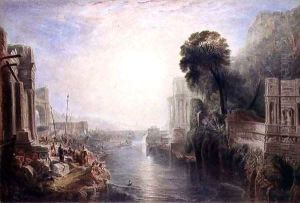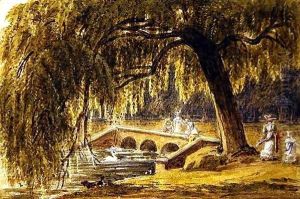George Barrett Paintings
George Barrett Sr. was an Irish landscape artist who is recognized for his significant contributions to British landscape painting in the 18th century. Born in Dublin, Ireland in 1732, Barrett emerged as a prominent figure in the art scene of his time, becoming a founding member of the Royal Academy in London.
Barrett began his artistic career in his native Ireland, where he developed a keen interest in landscape painting. His early work was influenced by the French Rococo style and the classical landscapes of Claude Lorrain. He was particularly adept at capturing the atmospheric effects of light and weather in his work, which distinguished him from his contemporaries.
In the 1760s, Barrett moved to London, which was a burgeoning center for the arts. His work caught the attention of prominent patrons, and he quickly established himself as a successful landscape painter. In 1768, he was chosen as one of the founding members of the Royal Academy of Arts, an institution set up to promote the visual arts in Britain through education and exhibitions. This position helped cement his reputation as a leading artist of his time.
Barrett's landscapes were characterized by their poetic mood and innovative compositions. He often painted English and Welsh countryside scenes, imbuing them with a sense of harmony and tranquility. His ability to convey the grandeur and beauty of nature made him popular among art collectors and the aristocracy, who commissioned him to paint views of their estates.
During his career, Barrett collaborated with other artists, including Thomas Gainsborough, with whom he shared a mutual respect. He was known to have contributed landscape backgrounds to some of Gainsborough's portraits.
Despite his success, Barrett faced financial difficulties later in life, partly due to his large family and his generous support of fellow artists. He continued to paint until his death in London in 1784. Barrett's legacy lived on through his children, several of whom also became artists. His work remains an important part of the history of British landscape painting and continues to be admired for its romantic and atmospheric qualities.

